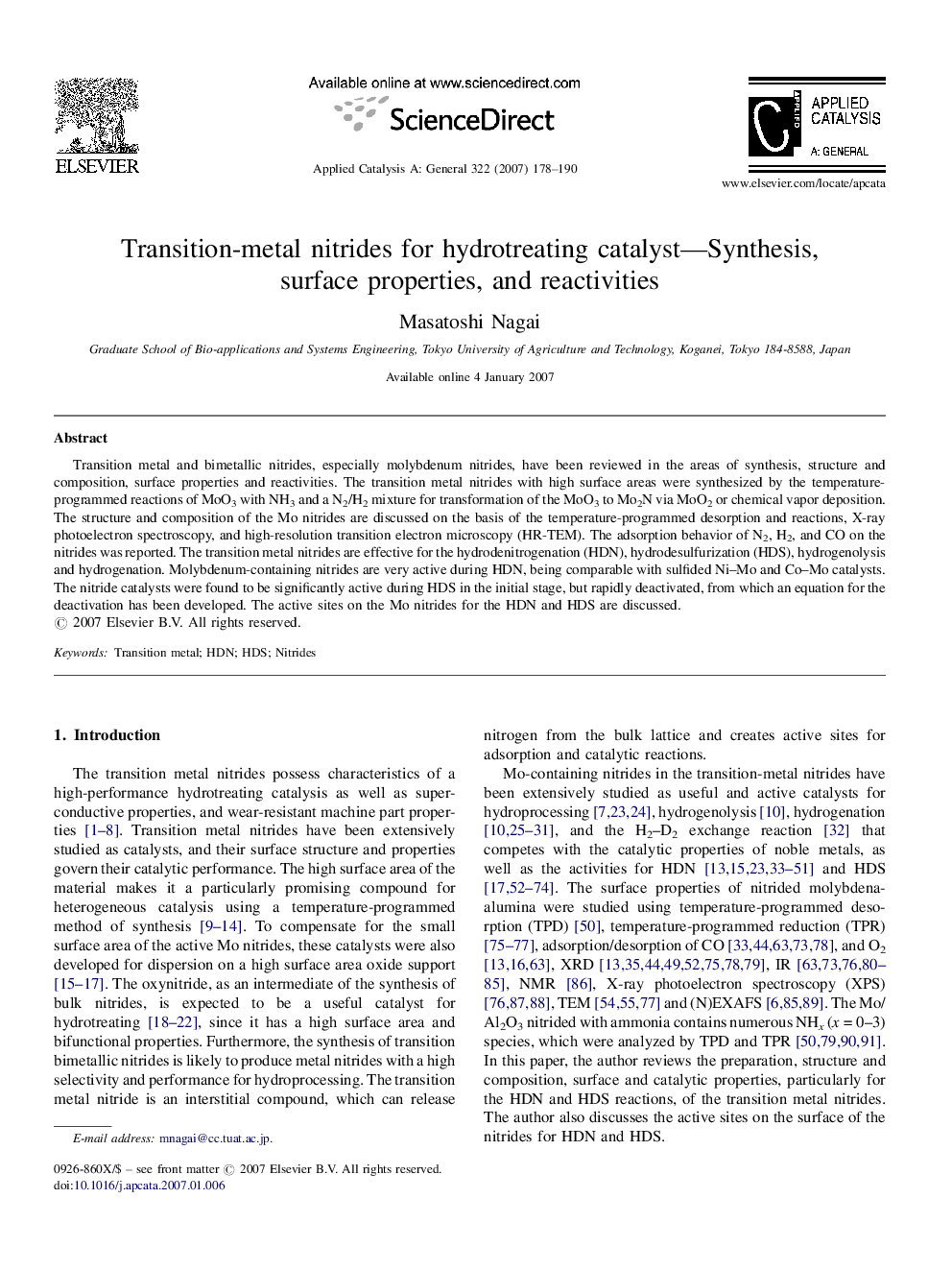| Article ID | Journal | Published Year | Pages | File Type |
|---|---|---|---|---|
| 43927 | Applied Catalysis A: General | 2007 | 13 Pages |
Transition metal and bimetallic nitrides, especially molybdenum nitrides, have been reviewed in the areas of synthesis, structure and composition, surface properties and reactivities. The transition metal nitrides with high surface areas were synthesized by the temperature-programmed reactions of MoO3 with NH3 and a N2/H2 mixture for transformation of the MoO3 to Mo2N via MoO2 or chemical vapor deposition. The structure and composition of the Mo nitrides are discussed on the basis of the temperature-programmed desorption and reactions, X-ray photoelectron spectroscopy, and high-resolution transition electron microscopy (HR-TEM). The adsorption behavior of N2, H2, and CO on the nitrides was reported. The transition metal nitrides are effective for the hydrodenitrogenation (HDN), hydrodesulfurization (HDS), hydrogenolysis and hydrogenation. Molybdenum-containing nitrides are very active during HDN, being comparable with sulfided Ni–Mo and Co–Mo catalysts. The nitride catalysts were found to be significantly active during HDS in the initial stage, but rapidly deactivated, from which an equation for the deactivation has been developed. The active sites on the Mo nitrides for the HDN and HDS are discussed.
